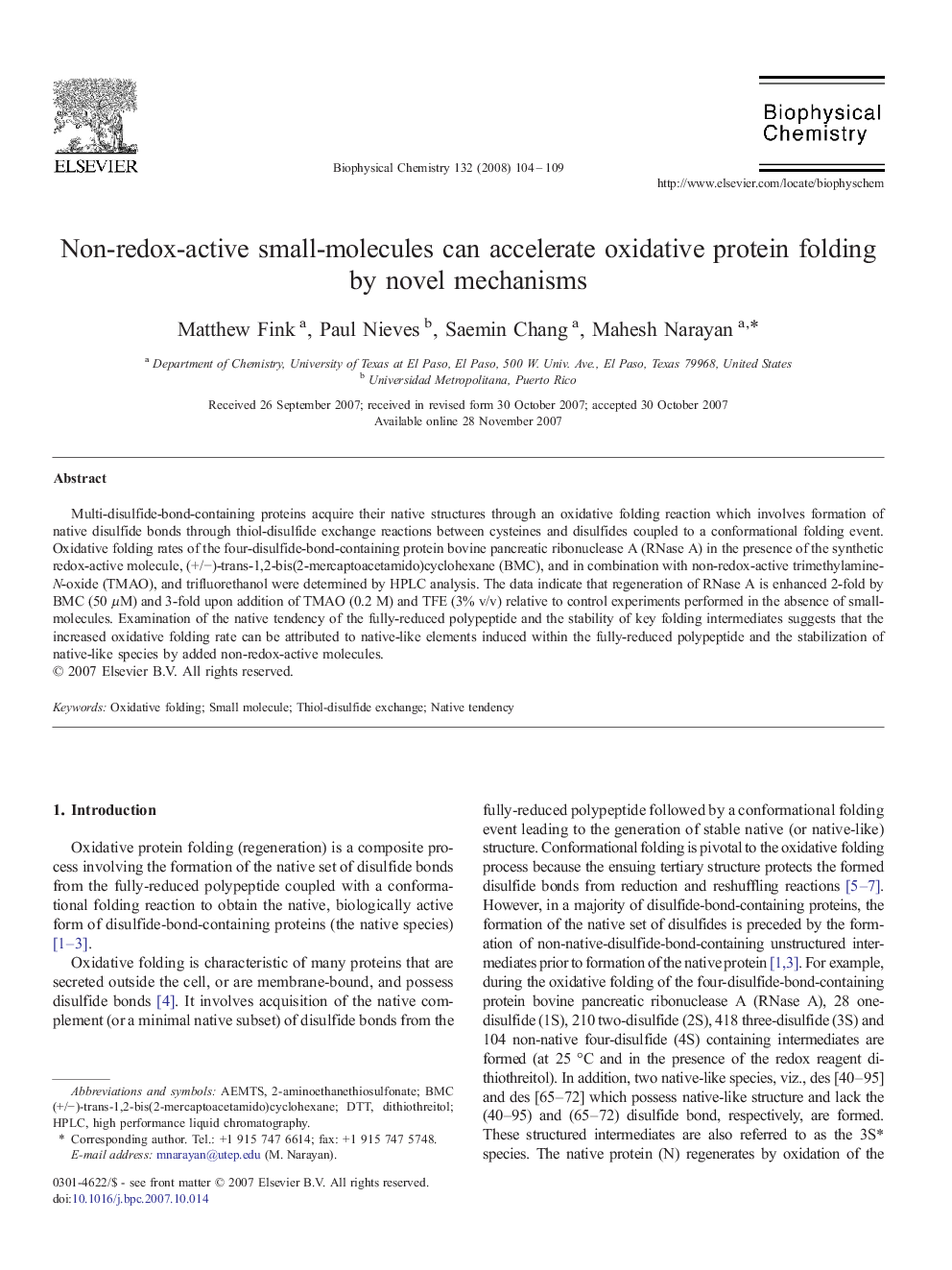| Article ID | Journal | Published Year | Pages | File Type |
|---|---|---|---|---|
| 5371866 | Biophysical Chemistry | 2008 | 6 Pages |
Abstract
Multi-disulfide-bond-containing proteins acquire their native structures through an oxidative folding reaction which involves formation of native disulfide bonds through thiol-disulfide exchange reactions between cysteines and disulfides coupled to a conformational folding event. Oxidative folding rates of the four-disulfide-bond-containing protein bovine pancreatic ribonuclease A (RNase A) in the presence of the synthetic redox-active molecule, (+/â)-trans-1,2-bis(2-mercaptoacetamido)cyclohexane (BMC), and in combination with non-redox-active trimethylamine-N-oxide (TMAO), and trifluorethanol were determined by HPLC analysis. The data indicate that regeneration of RNase A is enhanced 2-fold by BMC (50 μM) and 3-fold upon addition of TMAO (0.2 M) and TFE (3% v/v) relative to control experiments performed in the absence of small-molecules. Examination of the native tendency of the fully-reduced polypeptide and the stability of key folding intermediates suggests that the increased oxidative folding rate can be attributed to native-like elements induced within the fully-reduced polypeptide and the stabilization of native-like species by added non-redox-active molecules.
Keywords
Related Topics
Physical Sciences and Engineering
Chemistry
Physical and Theoretical Chemistry
Authors
Matthew Fink, Paul Nieves, Saemin Chang, Mahesh Narayan,
